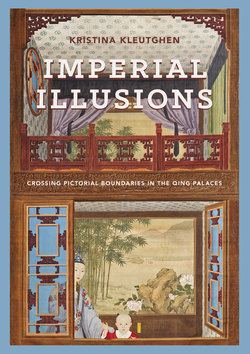Читать книгу Imperial Illusions - Kristina Kleutghen - Страница 33
На сайте Литреса книга снята с продажи.
Оглавлениеeighteenth-century China, and by the expanding world it was encountering. The aesthetics of illusion inherent in these works is characteristic of Qianlong’s interests, but is also part of a much larger empire-wide trend that predated his reign. Qianlong’s personal interest in Western artistic ideas was fueled as much by the artists at his court as by foreign objects acquired via trade in the port of Guangzhou (Canton), diplomatic gifts that nations from around the world regularly offered as tribute, and occidentalizing works produced domestically by Chinese artisans to meet the popular demand for such things, which extended far outside the court.56 Scenic illusions are therefore not an isolated aberration in the narrative of Chinese painting, or a breakdown in the global spread of Renaissance perspective, but the most impressive and dynamic illustrations of how Chinese visual and material culture were evolving in response to a constellation of period trends.
Scenic illusion paintings therefore cross multiple boundaries in Chinese art. Most simply, they cross the physical boundaries of the painting surface and the supporting wall, and thereby those between illusion and reality. Historically and historiographically, they also challenge the supposed purity of Chinese painting and the previous scholarly avoidance of deeply probing works that obviously incorporated European ideas, crossing the boundary between East and West in art history. Earlier characterizations of Chinese works of art that visibly integrated European ideas often criticized them as products of “European influence,” and therefore unworthy of study, although that approach has recently changed dramatically.57 Scenic illusions might seem to fall within a third, Sino-European or “intercultural” space of inquiry that exists somewhere between Chinese and Western art history.58 Yet even that assessment distances them from the overarching narrative of Chinese art history, which has long since integrated earlier works with elements from India, Japan, and elsewhere in Asia, but is still negotiating the role of Western incorporations before the fall of the imperial system in 1911. Instead of occupying some nebulous third space, therefore, as complex products of the multicultural Qing court scenic illusions should be considered a new evolutionary moment in Chinese painting, which has never been purely Chinese. The many boundaries that scenic illusions cross demonstrate the need to continue broadening the very definition of Chinese painting, mandating a revised narrative that places the Qing dynasty generally, and the eighteenth century specifically, in a more prominent position within the history of Chinese art.
